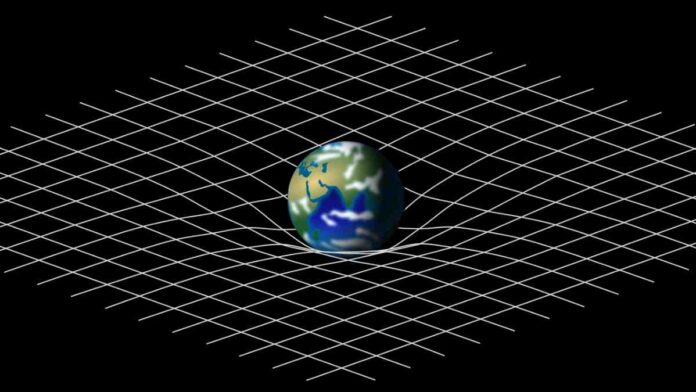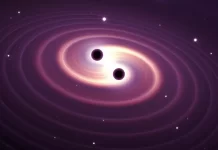Spacetime is a term that is often used in the context of physics and astronomy. It is a concept that has fascinated scientists and researchers for centuries, and it has played a crucial role in our understanding of the universe. The idea of spacetime is that it is The Interconnected Dimensions of Space and Time, and they cannot be separated from each other. In this article, we will explore what spacetime is, how it works, and why it is important.
Contents
What is spacetime?
Spacetime is a mathematical model that combines three dimensions of space with one dimension of time into a single four-dimensional continuum. This model was developed by the physicist Albert Einstein as part of his theory of relativity, which revolutionized our understanding of the universe. According to Einstein’s theory, spacetime is not just a passive stage in which events take place, but it is an active player in the way that events unfold.
Definition of spacetime: In physics, spacetime is a mathematical model that combines three dimensions of space and one dimension of time in a single four-dimensional freeze sequence. Spacetime diagrams can visualize relative effects, allowing different reviewers to see where and when events occur differently.
How does Spacetime Work?
The concept of spacetime can be difficult to understand, but it is crucial to our understanding of the universe. Imagine a sheet of paper that represents space, and imagine that time is represented by the thickness of the paper. The resulting structure is spacetime. Any event that takes place in the universe can be thought of as a point in spacetime, with the location in space and the time at which the event occurs represented by the coordinates of the point.
Spacetime is not static; it is constantly changing and warping in response to the matter and energy in the universe. The presence of matter and energy is what causes spacetime to curve, and this curvature affects the motion of objects in the universe. The more massive an object is, the more it curves spacetime, and the stronger its gravitational pull.
Why is Spacetime Important?
Spacetime is important for several reasons. First, it is a fundamental concept in our understanding of the universe. Without spacetime, we would not be able to describe how events occur or how objects move in space. Second, spacetime plays a crucial role in the theory of relativity, which is one of the most important and well-tested theories in physics. This theory has led to many important discoveries, such as the prediction of black holes and the bending of light around massive objects.
Finally, spacetime is important because it helps us understand the nature of time itself. In the classical view of physics, time is seen as a universal and absolute concept that ticks away at a constant rate. However, in the theory of relativity, time is relative to the observer and can be affected by the curvature of spacetime. This means that time can slow down or speed up depending on the conditions in which it is observed.
Spacetime concept in the 20th century
By the 20th century, there was the notion that the three-dimensional geometry of the universe (its spatial expression in terms of coordinates, distances, and directions) was one-dimensional time. But in 1905, Albert Einstein based his seminal work on special relativity on two words, and he stated –
- The laws of physics are invariant in all inertial systems (i.e., non-accelerating frames of reference) (i.e., are the same).
- The speed of light in the vacuum is the same for all reviewers, regardless of the speed of the light source.
The logical consequence of taking these positions together is inseparable along the four dimensions. Unfortunately, this leads to many counterintuitive results such that, apart from being independent of the speed of the light source, the speed of light has the same speed regardless of the frame of reference in which it is measured; The temporal order of distances and even pairs of events when measured in different inertial frames of reference (this is simultaneous relativity) and the linear additivity of velocities are no longer correct.
Kinematics (study of moving bodies)
Einstein formulated his theory in the context of kinematics (the study of moving bodies). His theory was a breakthrough in Laurentz’s 1904 electromagnetic phenomena and Poincaré’s electrodynamic theory. Although these theories included equations similar to those introduced by Einstein (i.e., Lorentz transformation), they were essentially models proposed to explain the results of various experiments – including the famous Michelson – Morley interferometer experiment – which currently exists. So it was tough to fit in.
In 1908 Hermann Minkowski — once one of the young Einstein mathematics professors in Zürich — presented a geometric interpretation of special relativity, describing three spatial dimensions of time and space in the same four-dimensional continuum as Minkowski’s space. Is known. A vital feature of this interpretation is the formal definition of spacetime intervals. Although measurements of distance and time between events differ for measures taken in different reference frames, the spacetime interval is independent of the inertial frame of reference in which they are recorded.
Minkowski’s geometric interpretation of relativity
Minkowski’s geometric interpretation of relativity was instrumental to Einstein’s development of his 1915 general theory of relativism, in which he showed how large-scale and energy curves are for this pseudo-Reimanold manifold over this flat lifetime.
Conclusion
Spacetime is a complex concept, but it is crucial to our understanding of the universe. By combining the dimensions of space and time into a single four-dimensional continuum, we are able to describe how events occur and how objects move in the universe. Spacetime is not static; it is constantly changing and warping in response to the matter and energy in the universe. Finally, spacetime helps us understand the nature of time itself, and it has led to many important discoveries in physics and astronomy.
Sources
- Einstein, A. (1915). Die Feldgleichungen der Gravitation [The Field Equations of Gravitation]. Sitzungsberichte der Königlich Preußischen Akademie der Wissenschaften zu Berlin, 844-847.
- Einstein, A. (1916). Die Grundlage der allgemeinen Relativitätstheorie [The Foundation of the General Theory of Relativity]. Annalen der Physik, 354(7), 769-822.
- Misner, C. W., Thorne, K. S., & Wheeler, J. A. (2017). Gravitation. Princeton University Press.
- Carroll, S. M. (2019). Spacetime and geometry: An introduction to general relativity. Cambridge University Press.
- Hawking, S. W., & Ellis, G. F. (2011). The large-scale structure of space-time. Cambridge University Press.
- Greene, B. (2004). The Fabric of the Cosmos: Space, Time, and the Texture of Reality. Knopf Doubleday Publishing Group.
- Rindler, W. (2006). Relativity: Special, General, and Cosmological. Oxford University Press.
- Taylor, E. F., & Wheeler, J. A. (2018). Spacetime Physics: Introduction to Special Relativity. W. H. Freeman.
- Wald, R. M. (1984). General Relativity. University of Chicago Press.
- Penrose, R. (2005). The Road to Reality: A Complete Guide to the Laws of the Universe. Vintage Books.
FACT CHECK: We strive for accuracy and fairness. But if you see something that doesn’t look right, please Contact us.
DISCLOSURE: This Article may contain affiliate links and Sponsored ads, to know more please read our Privacy Policy.
Stay Updated: Follow our WhatsApp Channel and Telegram Channel.












